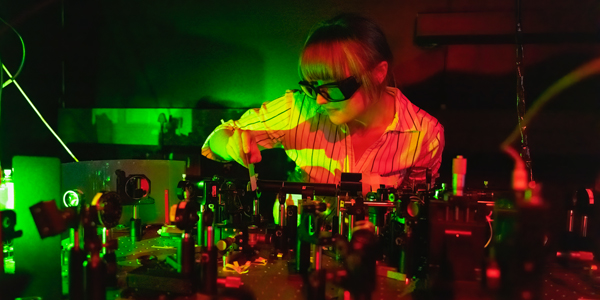Sometimes
it would be really good to find out what is going on in someone else’s
head and the Japanese may have taken a real step close to doing just
that.
Boffins at Japan’s ATR Computational Neuroscience Laboratories have managed to reconstruct pictures inside a human mind and display them on a computer.
The
researchers were able to piece together images seen by a person by
measuring changes in their cerebral blood flow. The scientists used a
unctional magnetic resonance imaging (fMRI) machine to map changes in
blood flow in the cerebral visual cortex as they looked at a set of
simple pictures.
The images were 400 random 10 x 10 pixel
black-and-white images and the subjects viewed them for 12 seconds at
a time. While this was happening, the computer compiled and processed
the data in an attempt to associate different blood flows with
individual image designs.
The subjects were then show completely
new images, in this case the letters N,E,U,R,O,N. The computer system
was then able to reproduce the image the subjects saw based solely on
measuring brain activity.
More on next page….
Related items
Playing Tetris beat post-traumatic stress disorder
IBM to make brain-like computer
New chip implant could herald bionic man
Take two microscopes into the shower
Satnav leading you astray? Blame the Northern Lights!
Playing computer games is good for you – official
{mospagebreak}At present, the computer can only
manage to reconstruct simple monochrome images. According to Dr. Kang
Cheng, a researcher from the RIKEN Brain Science Institute improvements could be made so that the system can replicate colour pictures from inside the heads of people.
"These results are a breakthrough in terms of understanding brain
activity," he said. "In as little as 10 years, advances in this
field of research may make it possible to read a person’s thoughts with
some degree of accuracy."
It is thought that the technology could be used to treat psychotic
disorders involving hallucinations. It may also be possible to read
feelings and emotional states, which could lead to better detection of
terrorist activity.
Source: Chunichi
Related items
Playing Tetris beat post-traumatic stress disorder
IBM to make brain-like computer
New chip implant could herald bionic man
Take two microscopes into the shower
Satnav leading you astray? Blame the Northern Lights!
Playing computer games is good for you – official

Patterns reproduce after analysing brain blood flows





















